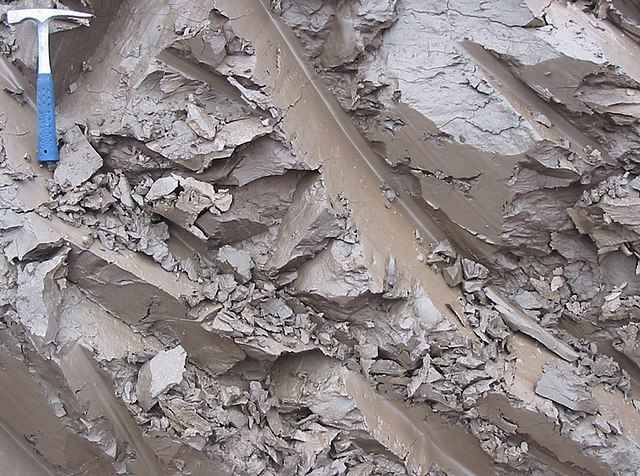Clay
soft rock based compound often used for sculpture and tools From Wikipedia, the free encyclopedia
Remove ads
Clay is a fine-grained silicate mineral made when rocks break down. Wet clay is soft and can be shaped to make pottery, bricks and other things. When it is shaped and then fired in a kiln to make it hard, it becomes pottery.

Clay often contains some water because the water molecules stick to the tiny grains. There may also be some organic materials in the clay.
There are 35 recognized clay mineral species on Earth, they make muds stick together ('cohesive'), or able to flow ('plastic'). The thixotropy of clay sometimes causes landslides.
Quartz, feldspars, iron oxides, and carbonates can weather to sizes of a typical clay mineral.[1] The formation of clay is well understood. It can come from soil, volcanic ash, and glaciation. Ancient mudrocks are another source, because they weather and disintegrate easily.[1]
Clay is by far the smallest particles recognized in mudrocks. A clay particle is about 1/1000th the width of a sand grain. This means a clay particle will travel 1000 times further at constant water velocity, thus requiring quieter conditions for settlement.[2] Where the grains are more than a few millimeters wide, the material is called silt, not clay.
Remove ads
References
Wikiwand - on
Seamless Wikipedia browsing. On steroids.
Remove ads
